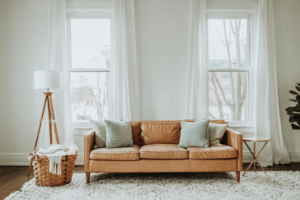Decorating a space is much more than just arranging furniture and hanging paintings. It reflects personal tastes, stories, and emotions, creating an environment that feels comfortable and authentic. With an increasing number of homeowners seeking to showcase their unique identities, the demand for personalized decor is on the rise. This shift in focus has transformed not only how people decorate their homes, and how brands market their products.
The Rise of Personalization in Home Decor
The desire for personalized decor is fueled by a growing emphasis on individuality. As social media platforms showcase endless interior designs, users are inspired to curate their own spaces, making bold choices that reflect inner creativity. This shift indicates a broader cultural movement towards valuing self-expression through home aesthetics. Consumers seek out pieces that tell a story, often opting for handmade goods or vintage items that hold character.
The opportunity to mix various styles and cultures has gained traction, allowing individuals to showcase their heritage or travels through their decor. Retailers have taken notice, offering customizable options to cater to this trend. From wallpaper patterns to adaptable furniture, brands are responding with variety and versatility. With options like Easy Frame, which allow individuals to frame artworks and photographs in ways that resonate with their particular aesthetics, decorating is more personal than ever. This growing focus on individuality is reshaping the design industry, pushing innovation that prioritizes personal meaning over mass appeal.
Understanding the Role of Technology
Technology has fundamentally changed how people approach home decor. Online platforms provide access to countless design ideas, allowing for inspiration from across the globe. Virtual reality and augmented reality tools allow homeowners to visualize changes before making investments. With these technologies, users can see how new elements coexist with existing ones, enabling them to make choices that fit their vision.
Hashtags related to interior design circulate widely, prompting trends based on what’s popular online. This interconnectedness has fostered a culture where people celebrate diverse styles, embracing eclectic redesigns that combine various influences. Home decor shows and adept influencers on platforms like Instagram and Pinterest showcase trends, encouraging followers to experiment safely in their homes.
Eclectic Designs: A Representation of Unique Stories
Gone are the days when minimalism dominated home aesthetics. Now, eclectic designs reign supreme, showcasing a mix of colors, textures, and patterns that embody the homeowner’s personality. Eclectic decor invites creativity and spontaneity, blurring traditional design lines that seemed rigid in the past. Every element can carry a story, from a painting picked up during travels to hand-crafted items that echo a family legacy.
The growing trend for mixing styles often leads to surprising and harmonious outcomes. Vintage pieces often find their place alongside modern imports, cohesively linking the past and present. This eclecticism creates a warm, inviting atmosphere that resonates with visitors and invites conversation. As designers learn to play with contrasting elements, they enhance spaces that truly reflect individual identities and share the homeowner’s journey.
Sustainability and Ethical Consumption
With increasing awareness surrounding environmental issues, sustainability has become a vital aspect of home decor. Individuals seek furniture and decor made from sustainable materials to align their buying habits with their values. By choosing ethically-sourced items, individuals add layers of meaning to their spaces, reinforcing their commitment to careful consumption.
 Sustainable decor trends toward the notion of upcycling, where materials are repurposed rather than discarded. This form of creativity adds a unique touch, as items are transformed into something new and functional. The act of personalizing decor through thoughtful, sustainable choices emphasizes a deep appreciation for not just aesthetics and the environmental impact of one’s lifestyle.
Sustainable decor trends toward the notion of upcycling, where materials are repurposed rather than discarded. This form of creativity adds a unique touch, as items are transformed into something new and functional. The act of personalizing decor through thoughtful, sustainable choices emphasizes a deep appreciation for not just aesthetics and the environmental impact of one’s lifestyle.
The Influence of Culture and Globalization
Cultural influences play a significant role in shaping individual home decor styles. As globalization brings diverse ideas and traditions into the limelight, homeowners find inspiration in various cultures. This cultural exchange enables people to incorporate diverse elements and themes reflective of their interests and travels. From African textiles to Scandinavian minimalism, the options are endless.
Under this lens, decor becomes a means of storytelling where each item narrates a unique narrative rooted in cultural heritage. The blending of traditions allows individuals to craft cohesive spaces that echo their journeys and values, further deepening their connection to their homes. Engaging with different cultural influences brings new dimensions into a residence, transforming it into a collage of experience and expression.
Community and Collaboration in Decor
As decor trends shift towards the personal, community, and collaboration have found their place in the modern design landscape. Community-driven projects, local artist collaborations, and cooperative purchases are gaining traction. Homeowners are tapping into their local arts and crafts communities to find unique pieces that tell a story.
This approach allows people to appreciate the talent and artistry of those around them while decorating their homes with meaningful items. By sharing experiences and collaborating with others, individuals amplify the stories behind their decor, transforming their living spaces into reflections of communal creativity and support.
Embracing decor that represents individual style and personality transforms living spaces into authentic extensions of self. With a focus on personalization, technology, cultural influences, sustainability, and community, homeowners are empowered to design their surroundings genuinely. As this trend escalates, both consumers and industries benefit from the energetic exchange of ideas and creativity.
